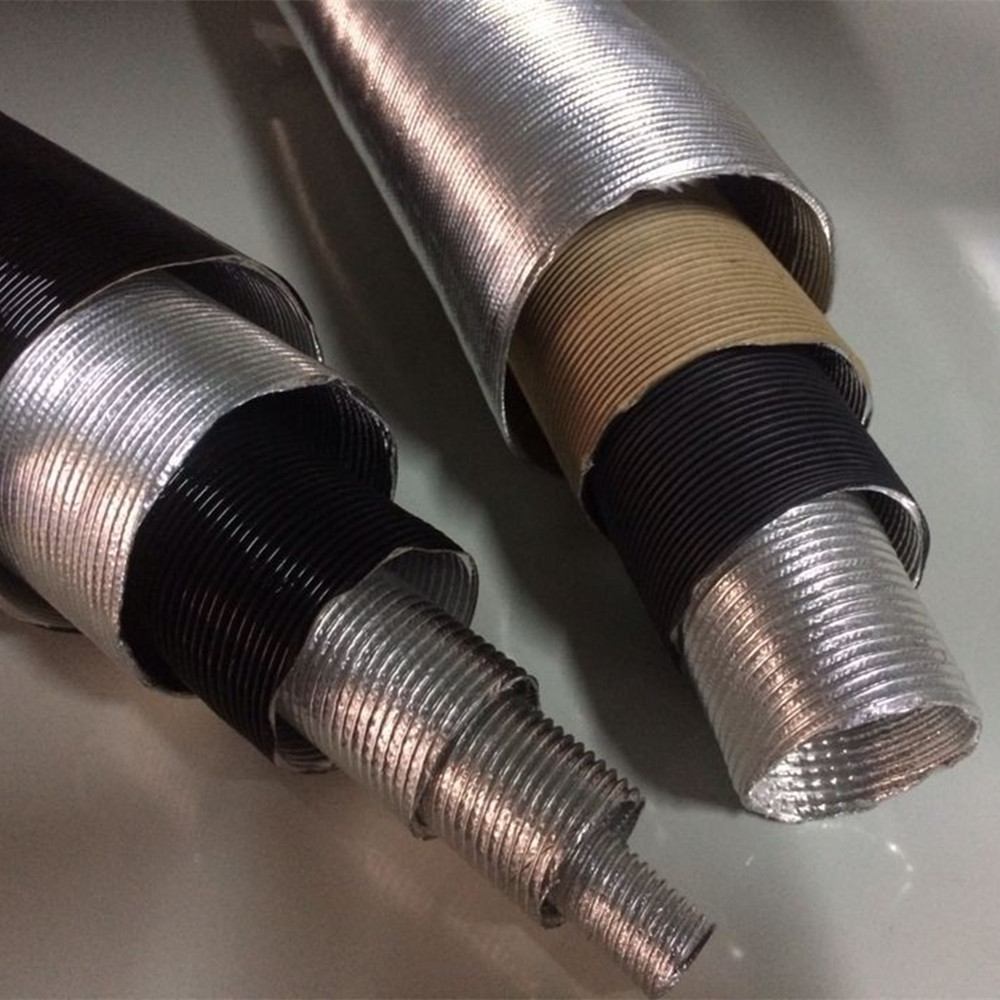Flexible hot air duct plays a vital role in optimizing thermal management, safety, and efficiency across automotive, aerospace, rail, and marine industries. Tailored material combinations ensure resilience against extreme temperatures, vibrations, and environmental stressors. Below is a revised breakdown focused on vehicle-specific applications:
Structure: Aluminum foil layer laminated with fiberglass insulation, multilayer structure.
Key Advantages:
Heat resistance up to 250°C and lightweight flexibility.
Vibration damping and abrasion resistance.
Vehicle Applications:
Electric Vehicle (EV) Battery Thermal Management: Distributes heated/cooled air to maintain optimal battery temperatures.
Diesel Engine Exhaust Gas Recirculation (EGR): Transports hot exhaust gases for emission control systems in trucks and buses.
Aerospace Cabin Heating: Flexible ducts for cockpit and passenger cabin air distribution.
Case Study: A German EV manufacturer integrated aluminum+fiberglass ducts into its battery packs, achieving uniform temperature control (±2°C variance) across 500+ cycles.
Structure: Kraft paper layer bonded to aluminum foil, multilayer structure.
Key Advantages:
Cost-effective for moderate heat (<120°C) and humidity resistance.
Easy to customize for tight spaces.
Vehicle Applications:
Railway HVAC Systems: Heating/cooling ducts for passenger trains and metro carriages.
Commercial Vehicle Engine Bays: Temporary heat shielding during cold-start preheating in trucks.
Agricultural Machinery: Airflow ducts for crop drying systems in harvesters.
Case Study: A Japanese bullet train operator reduced HVAC installation costs by 25% using kraft+aluminum ducts, maintaining 85°C airflow for winter cabin heating.
Structure: 2 to 4 aluminum foil layers.
Key Advantages:
Ultra-high heat resistance (300°C+) and puncture-proof durability.
Reflects radiant heat and resists oil/fuel exposure.
Vehicle Applications:
Aircraft Engine Bleed Air Systems: Channels 300°C+ compressed air from engines to cabin pressurization systems.
Military Vehicle Exhausts: Withstands extreme heat and debris in armored vehicle exhaust routing.
High-Speed Rail Brake Cooling: Dissipates heat from friction brakes during deceleration.
Case Study: A U.S. aerospace supplier adopted double-layer aluminum ducts for fighter jet engine test rigs, enduring 10,000+ thermal shock cycles without failure.
Structure: Silicone-coated fiberglass fabric with embedded steel wire reinforcement.
Key Advantages:
Extreme temperature range (-70°C to +300°C) and chemical/oil resistance.
Flame-retardant and compliant with aviation safety standards.
Vehicle Applications:
Hybrid/Electric Vehicle Charging Stations: Manages heat from fast-charging cables and battery cooling.
Marine Engine Rooms: Resists saltwater corrosion and high-humidity environments in ships.
Emergency Vehicle Heating: Reliable ducts for firetruck and ambulance onboard heating systems.
Case Study: A Scandinavian ferry operator replaced PVC ducts with silicone+fiberglass in engine rooms, eliminating corrosion issues and extending service life by 8 years.
Structure: Tri-layer design with PVC-coated interior, kraft paper insulation, and aluminum outer shield.
Key Advantages:
Waterproof, lightweight, and ideal for temporary setups.
Budget-friendly for short-term thermal solutions.
Vehicle Applications:
Automotive Paint Shop Drying Tunnels: Temporary ducts for curing vehicle coatings in assembly plants.
Refrigerated Transport Trucks: Manages defrosting airflow in cold chain logistics.
Construction Vehicle Cabins: Heating ducts for excavators and bulldozers in winter operations.
Case Study: A Chinese EV factory used PVC+kraft+aluminum ducts in paint-drying tunnels, reducing energy consumption by 20% while maintaining 80°C airflow consistency.
| Material | Best For | Temperature Range | Key Vehicles |
|---|---|---|---|
| Aluminum+Fiberglass | EV battery systems, cabin heating | -40°C to 250°C | EVs, trains, aircraft |
| Kraft+Aluminum | Train HVAC, agricultural machinery | -30°C to 120°C | Railcars, harvesters, trucks |
| Aluminum+Aluminum | Jet engines, military exhausts | -50°C to 300°C+ | Aircraft, armored vehicles |
| Silicone+Fiberglass | Marine engines, emergency vehicles | -70°C to 300°C | Ships, firetrucks, EVs |
| PVC+Kraft+Aluminum | Paint shops, refrigerated transport | -20°C to 80°C | Factory vehicles, logistics trucks |
EVs: Silicone-based ducts are gaining traction for battery thermal runaway prevention.
Autonomous Vehicles: Lightweight aluminum+fiberglass ducts support compact HVAC designs.
Aerospace: Double-layer aluminum ducts meet FAA/EASA fireproofing mandates.
By aligning material properties with vehicle-specific demands, manufacturers enhance performance, comply with safety regulations, and reduce lifecycle costs.
